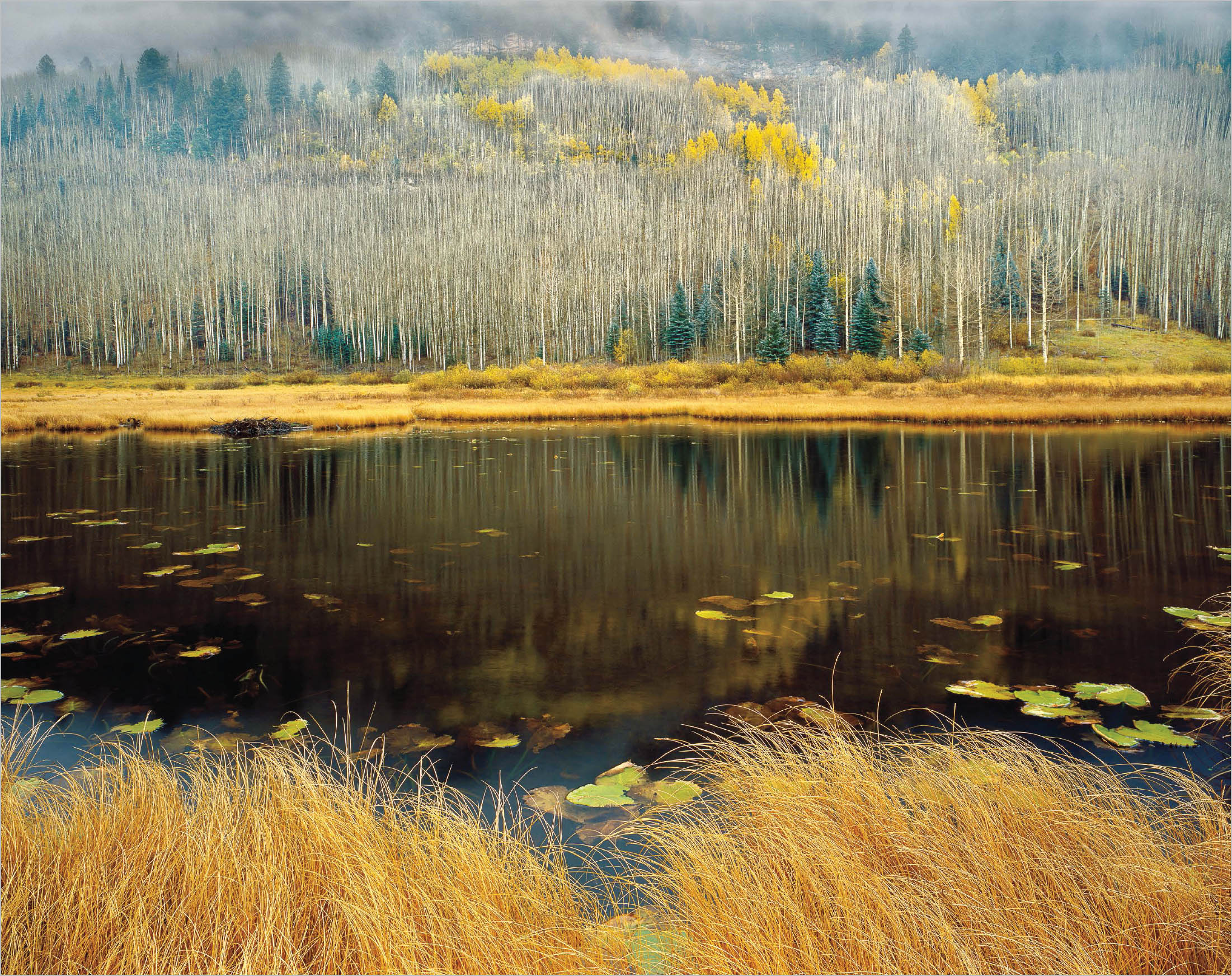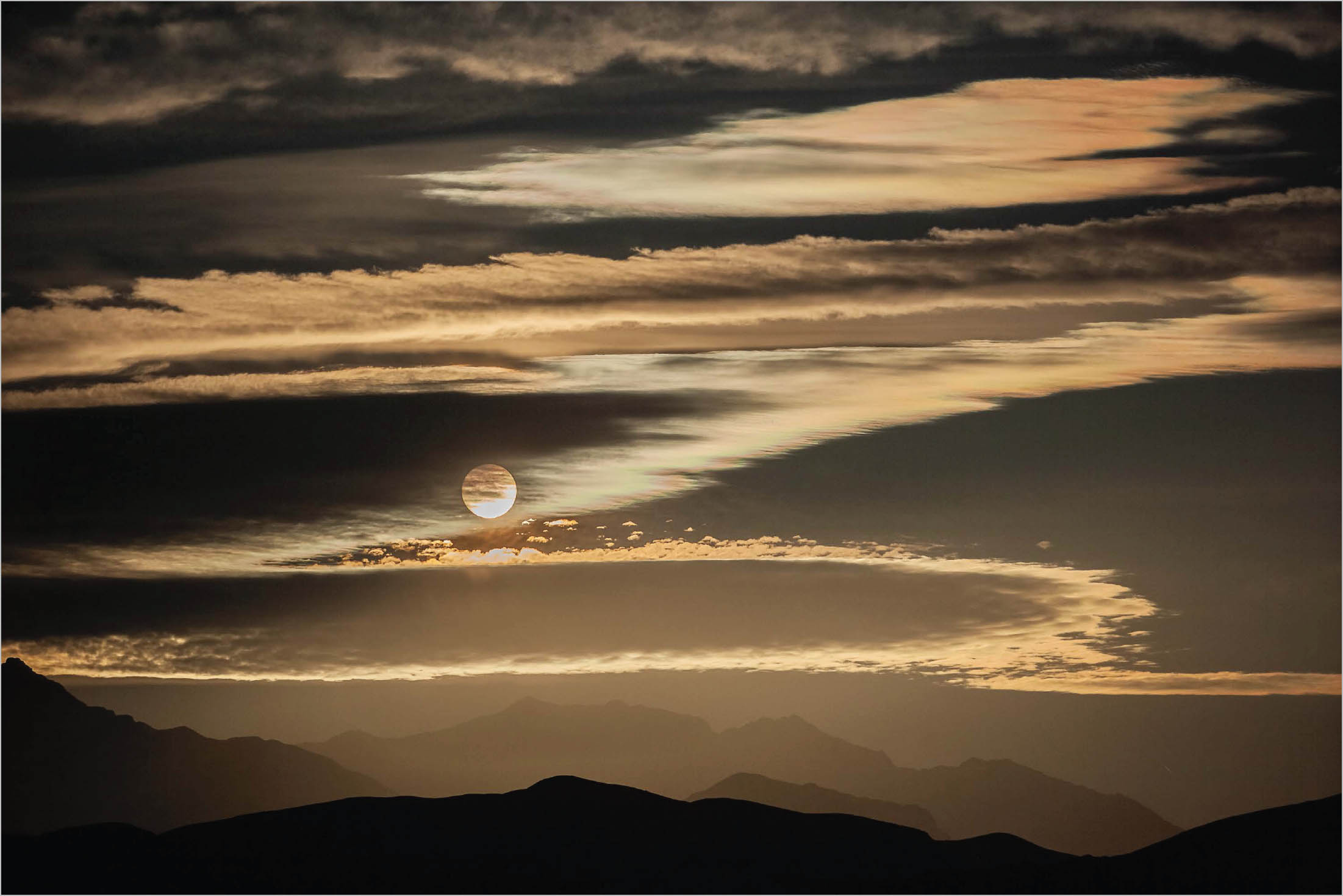ASPEN VARIATIONS
ALLOW YOUR INTERPRETATION TO GROW AND EVOLVE
Variations on a theme. More than one right answer. Work the subject thoroughly. As a teacher, I always look for key focus points that photographers can work on to improve. I keep coming back to the same concepts, encompassed by the phrases above. The creative process requires experimentation and exploration. When reviewing my own images, I continually analyze my successes and failures. Success occurs most often when I push myself beyond my initial composition for a given scene.
The aspen photographs shown here illustrate a simple change of lens. I shot one image with a wide-angle lens and one with a normal focal length. The closer view is my favorite of the two. This tighter framing shows the lines of the aspens with more impact, with the strong graphics that I love. In keeping with the “less is more” adage, the composition has just enough of the essential componants: reflection, meadow, vertical trunks, evergreen trees, and yellow leaves, without one element distracting from another.
I also recognized that I had a wonderful foreground element in the grasses at my feet. Using my 4x5 film camera, I changed from my “normal” 210mm lens to my 90mm, which is the equivalent to 28mm on a 35mm camera. This lens allowed me to add the beautiful curves of golden-colored grass leading into the scene. We also see more of the clouds hanging onto the mountains above the aspen grove.
The wide-angle view provides a more clear sense of the location, and therefore has been a better seller. While most photographers would heavily promote the more popular image, I did the opposite. I guess I should have taken a marketing course in college. But the artist in me is stubborn. I’ve spent more energy marketing my personal favorites because I want to be known for my very best artistic expressions.
A light snow fell during my session, adding to the magic of the scene in Colorado’s San Juan Mountains. Though the snow is not visible due to a long exposure time, the feeling of seasonal transition, a favorite theme of mine, comes through in both images to me. The last clinging yellow leaves and bare aspen trunks indicate that winter is near.
I have been making prints of both images ever since they were captured in 1985. Over those years, my printmaking for them has evolved. At first, I used analog materials, Cibachrome and Ilfochrome, as digital printing had yet to be born. Next, I used EverColor and Lightjet materials, back in the earliest days of digital printing. Each of those options had its advantages. I now happily use my Canon IPF pigment inkjet printers.
As my Photoshop and Lightroom skills keep improving, nearly every time I open a file I find a way to elevate that photograph. I’ve been using the Luminosity masks offered by Tony Kuyper and taught through extensive tutorials by Sean Bagshaw. They are well worth a look.
For my retrospective book, which includes 151 images, I opened every file to prep each one for publication, and in the process tweaked many of them. I’ve read about how Ansel Adams’s printing changed over the years, and he strived for that “perfection” over decades of work in his darkroom. His approach taught me to allow my interpretation to grow and evolve as my skills and tastes change.
Lessons to be learned:
- 1. Explore and experiment. Work a scene thoroughly, “continually looking for the next right answer,” as Dewitt Jones so succinctly puts it.
- 2. Embrace your evolution. Always work to learn more, both creatively and regarding technique. Your perspective will always be changing, be it how you frame a composition, what lens you prefer for landscapes, or how you process the contrast and color of the final image. New techniques and new technology will offer new creative viewpoints.
- 3. Photograph what you love so that marketing will become about sharing your passions instead of simply trying to sell something.
Most importantly, have fun and enjoy the ride!
Aspens and Pond | Purgatory, Colorado | 1985
Sunrise and Clouds | Amargosa Range, Death Valley National Park, California | 2007

